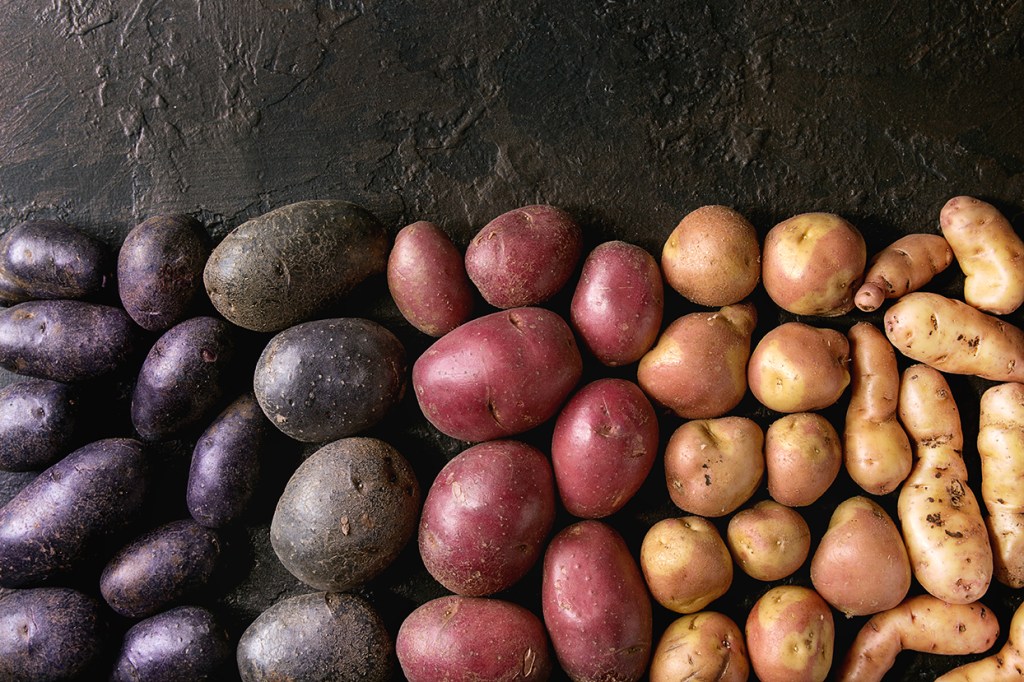COMMON TATERS: The most popular vegetable is both surprising and obvious
Published 6:45 am Sunday, July 7, 2019

- Potatoes
When trying to decide the next crop to write about in my spotlight on vegetables series, I searched the web for “most popular vegetables.” The first site had a list of the most consumed vegetables, the second the most popular vegetables, the third the vegetables most sold in the United States.
The same vegetable was at the top of each list. It seems we just can’t get enough of potatoes.
Trending
This makes sense, since they are served in just about every fast food restaurant across the country as French fries and on the breakfast menu as hash browns. Restaurants usually offer some variety of potato as a side dish as well.
A quick glance over at my kitchen counter confirmed at least my people’s love of potatoes as I had russet, red and sweet potatoes in my “potato basket” and a bag of kettle cooked potato chips.
There are endless varieties of potatoes, but they all fit into a few categories — russet, red, white, yellow, blue/purple, fingerling and petite. This is a quick reference guide as to the uses and characteristics of each:
• Russet: Starchy, dry; mild, earthy flavor. May be used for baking, roasting, frying, mashing. Great for making potato skins. Starchy potatoes, like Idaho or russet, don’t hold their shape well when cooked. Avoid using them in dishes where shape matters, such as potato salads, gratins, in stews or casseroles;
• Red: Waxy, moist, creamy; stays firm. May be used for roasting, mashing, potato salad, in soups and stews;
• White: Medium starch, thin skin, holds shape. May be used for mashing with skin, steaming, boiling or salads;
Trending
• Yellow: Slightly waxy; smooth, buttery. May be used for grilling whole, roasting, mashing and salads;
• Blue/purple: Waxy, firm: earthy, nutty flavor; adds vibrant color. May be used for roasting, grilling and salads;
• Fingerling: Waxy, firm, small; buttery, nutty flavor. Variety of colors. May be used for roasting, pan-fried, salads. Although costly to purchase, they can be grown for a fraction of the cost;
• Petite: Same variety of red, yellow and purple potatoes with the same flavor profile, but bite-sized. May be used for roasting, salads and frying. The French often use petite potatoes in their potato salad simply dressed in oil, vinegar and fresh herbs; and
• Recommended varieties: Sebago (all-purpose), Superior (white), Red La Soda (red), Red Pontiac (red, “new”), Russian Banana (fingerling), Purple Majesty (blue).
Growing
Potatoes can be planted in either February or from Aug. 1-15. They mature in 70-90 days. (The information provided is for Irish variety potatoes, which does not include sweet potatoes.)
Potatoes grow best in loamy (sandy) acidic soil, with a pH between 5.0 to 6.0 and in full sun. If you are not growing in a container or raised bed, give ground soil a deep tilling. Tilling loosens soil, which allows the tuber to expand as it grows. Tightly packed clay will prevent the tuber from developing.
To plant, dig a trench approximately 6-8 inches deep. Potatoes grow from seed potato, meaning they grow from a planted piece of potato as compared to a seed.
Potatoes can be cut into multiple pieces, as long as each piece has at least two eyes. If you are cutting potatoes, make sure to do so two or three days before planting to allow the piece to heal. Place potato pieces at the bottom of the trench with the eyes facing up.
Cover with a few inches of soil. When sprouts begin to appear, cover plant with another 3 or 4 inches of soil, leaving a few inches of the plant exposed. As the plant grows, continue to move soil around the sides of the plant. This is called hilling. Hill the soil around the plant until the plant begins to flower. The same general method is used when growing potatoes in a container, adding soil to the container as the plant grows.
After planting and while the plant is growing, provide one to two inches of water per week. Potatoes require moisture, but overwatering could cause the tuber to rot. You can till 10-10-10 fertilizer into the soil when planting and fertilize again every few weeks.
Potatoes can be harvested after the tops of the plant start to turn yellow and die off. Carefully harvest potatoes with a spade or by hand. Store potatoes in a cool, dry place that is well-ventilated and shaded from sun to prevent sprouting.
Recipe
Potato recipes are as abundant as the variety of potatoes. I am a big fan of potatoes with cheese, especially when the cheese adds a unique flavor. This recipe works well with any good melting cheese.
In the words of A.A. Milner, “What I say is that if a man really likes potatoes, he must be a pretty decent sort of fellow,” and I agree.
Gorgonzola Au Gratin Potatoes
Ingredients
3 tablespoons butter
2 cloves garlic, minced
1 shallot (or 2 tablespoons onion), minced
1-1/2 cup milk
1-1/2 cup heavy cream
2 teaspoons fresh thyme leaves
½ teaspoon each salt and pepper
2-1/2 pounds red potatoes, sliced thin
6 ounces gorgonzola cheese, crumbled
¼ teaspoon fresh grated nutmeg
Directions
Preheat oven to 350 degrees. In a heavy-bottom pot or frying pan, melt butter over medium-high heat. Add shallot or onion and sauté until soft, approximately 2 or 3 minutes. Add garlic and cook for another minute.
Add milk, cream, thyme, salt and pepper. Add crumbled gorgonzola and nutmeg. Heat through until cheese is melted throughout, stirring continually. Remove from heat.
Spread a small amount of cheese sauce over the bottom of a 9-by-12-inch casserole dish. Arrange half of the potato slices so they cover the bottom of the dish. Pour half of the cheese sauce over the potatoes. Add remaining potatoes to dish and top with remaining cheese sauce.
Bake in preheated oven for 45 minutes or until the top starts to brown slightly. Let stand for 10 minutes before serving.
Until next week, happy gardening and bon appetite.





